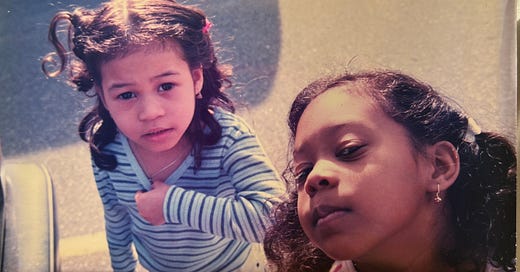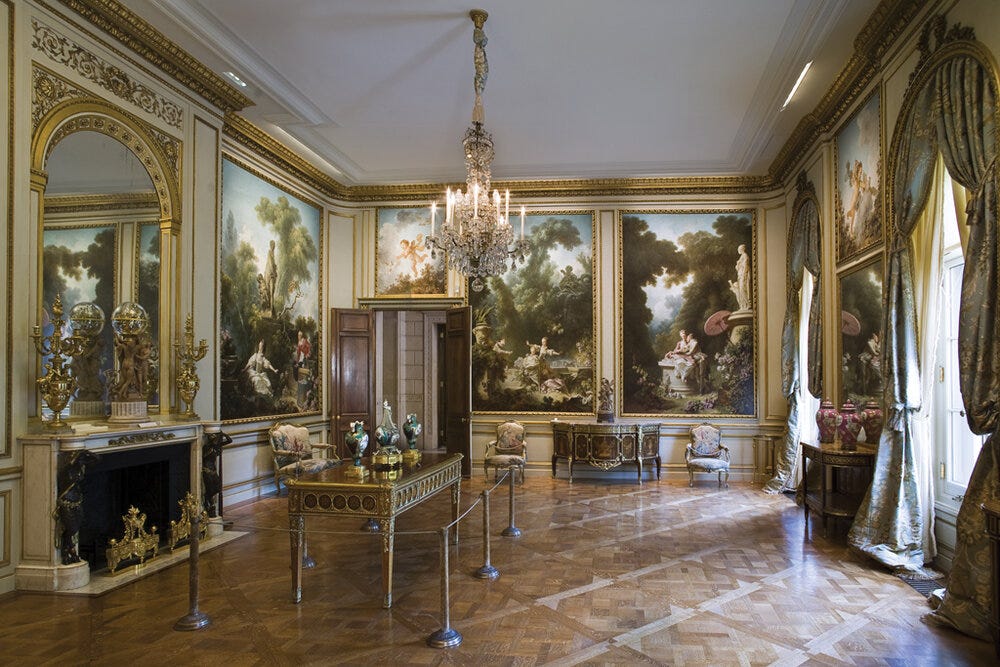TW: Depression and Suicide
Dial 988 for the National Suicide and Crisis Lifeline if you, or a loved one needs support.
We exchange glances in a way only we can understand. On the B26 bus, en route to Prospect Park, sit two little girls directly across from me. They could be twins or maybe best friends. I pull out the book I’m reading today so that they know I’m well read. It’s a slight gesture to magnify the mystery and one I hope sews some inspiration. A smile bubbles up between all three of us and seals the magic of it all. Princesses understand each other.
It recently occurred to me that I might not be a princess for real 🫨. But I remember a time I were being chauffeured in the backseat of the car with my older sister Ashley, peering out the window and our father etching out the silhouette of Cinderella’s Castle in the Atlanta skyline with his pointer finger as we slid down I-75 S. Back then, the idea felt tangible and always within reach.
The idea is fantasy – a Princess dwelling safely in her castle, with everything she could ever want, never experiencing a second of need, and guarded by knights from harm. She always knows what to say and when to say it and who to say it to. Princesses get what they want.
So here I am – 27 years of age and acutely aware of the distance between my reality and where I dreamt to be. I am facing the heart wrenching realization that I am, in fact, not a Princess. No one is coming to rescue me from the fire.
Fragonard
The Progress of Love
Madame du Barry, a mistress of King Louis XV, commissioned this painting from French artist Jean-Honoré Fragonard (1732 - 1806). The four-part canvas series depicts a story of love from inception to consummation. The painting was meant to be enjoyed in a domestic environment.
I saw it at the Frick. It felt good.
Beginning on the right wall, by the window, and moving clockwise, is the playing out of four stages in an amorous relationship between a man and a woman. The couple advances from a flirtatious proposal (a young man springs forward to offer a rose to a girl) to a secretive meeting on a terrace on the right (the lover scales the wall of a garden) to marriage on the other side of the room (the girl crowns her lover with roses), and the peaceful enjoyment of a happy union (the reading of love letters under the statue of Friendship). Women dominate this cycle, and friendship is suggested as the climax of love.
Madame du Barry was a capricious patron. In 1773, she rejected Fragonard’s four paintings, eventually replacing them with works by Joseph-Marie Vien in the emerging neoclassical style. The reason for the rejection is unknown. It may have been for stylistic reasons or for how much of her own story she could read, or knew others would read, in the canvases. Fragonard kept the four paintings—likely rolled up—for the next twenty years.
After the death of Louis XV, Du Barry was sent to a nunnery but released a year later. She lived at Louveciennes until the onset of the Reign of Terror, when she was arrested and beheaded on the Place de la Revolution (today, Place de la Concorde). The painter Élisabeth Vigée Le Brun, who portrayed Du Barry a number of times, vividly described her last moments: “She was the only woman,” she said, “among all who perished in those dreadful days, unable to face the scaffold with firmness; she screamed, she sued for pardon to the hideous mob surrounding her, and that mob became moved to such a degree that the executioner hastened to finish his task. This has always confirmed my belief that if the victims of that period of execrable memory had not had the noble pride of dying with fortitude the Terror would have ceased long before it did.”
The artwork was rejected by Madame du Barry and likely remained hidden for twenty years.
These works of art are marred by horror.
Affirmations
I am fulfilled by my purpose.
I will not hold back.
I love myself
Every moment is perfect.
Rose Uniacke
Rose Uniacke is an interior designer, a designer of furniture and lighting – for individual clients as well as for her shop - and a dealer in both antiques and pieces by other, usually well known, designers. Her home is an enchanting mashup of monastary-meets-Venezian-Palazzo. It exists as poetry in motion. It is the most beautiful home I have ever seen. It is something to live for.
My dream.
Reflection
How could I not want it anymore? My life, I mean. It didn’t feel like it had much weight or purpose. I know now it’s not true. but it was scary there for a minute. I want to describe to you what depression feels like: the pressure that builds as you dive deeper and deeper into the ocean - that sensation you’d feel in your ears, but like a pit in your stomach. Ok now, a iron knife and you’re holding onto it. Last, a mermaid crying a million tears under the ocean.
Well I changed my mind and I want to keep her. Little-me, I mean. Who is Same-me. I wiped the mirror clean. I want to protect the crown, to make sure no harm comes to the crown and I think she deserves everything she could ever want and I’m willing to work for it to give it to her.
because I’m not scared anymore. I know how to feel, and what I want to say. I am hungry for every ounce of pleasure from life I can get – from the second I wake to the second I close my eyes. It’s a good life.
Maybe I can be Princess after all.









princesses understand each other!